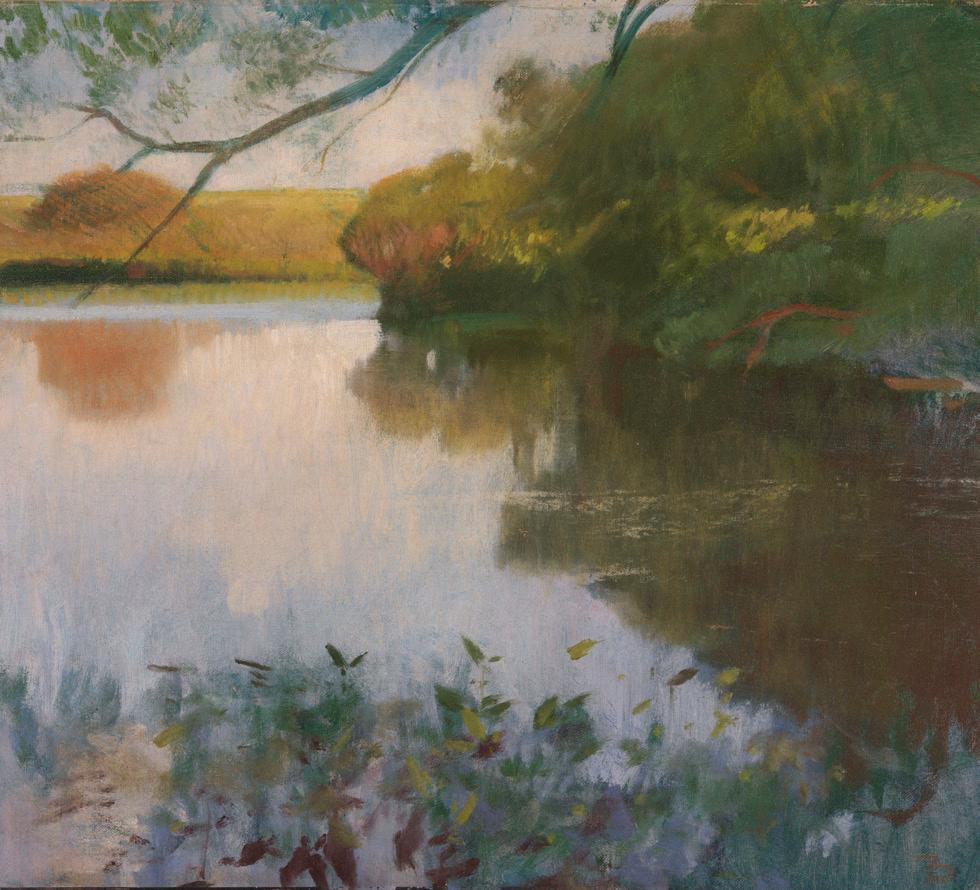
2 minute read
Art of a Spring Day
141 Cambridge Street Boston, Mass. 02114-2702
Appreciating the art of a Spring Day
The artist Frank Duveneck (1848-1919) was born in Kentucky and lived much of his life in Cincinnati, Ohio, but he established significant ties to New England. Among them was his marriage to Boston-born fellow painter Elizabeth Boott (her great-grandparents included Sally and Harrison Gray Otis and Lydia and Theodore Lyman). Later in life, Duveneck frequently returned to this region in the summertime to paint.
Duveneck began his career as a church muralist. By age twenty-one he had scraped together enough money to travel to Munich for further study, where he soon won an unprecedented number of awards. When he went back to Cincinnati a few years later he had little success interesting potential clients in his work. An 1875 exhibition held in Boston was a turning point. In a review of the exhibition, author Henry James described in Duveneck’s work “the discovery of an unsuspected man of genius.”
His reputation established, Duveneck returned to Munich and before long began holding his own classes, attracting a group of young aspiring Americans, including William Merritt Chase and John Twachtman among others, who came to be known as “the Duveneck boys.” Another talented student, Elizabeth “Lizzie” Otis Lyman Boott, would eventually supplant the boys.
Boott had been raised in Florence by her widowed father. She trained as an artist in Paris with Thomas by NANCY CARLISLE Senior Curator of Collections
Couture and in Boston with William Morris Hunt. Later, she traveled to Munich to study with Duveneck. Against her father’s wishes, the two were engaged and eventually married. Her early death resulted in one of the most poignant monuments of the nineteenth century, Duveneck’s tomb effigy in bronze in the Allori Cemetery in Florence and the marble copy he made at his father-inlaw’s request for the Museum of Fine Arts, Boston.
Within a few years of his wife’s death, Duveneck returned to Cincinnati, living in comparative obscurity despite his earlier international success. Around 1900 he began spending his summers in Gloucester, Massachusetts, painting and teaching, and it may have been there that he painted Spring Landscape. He continued painting impressionistic landscapes and seascapes until his death in 1919.
Spring Day is on view at the Eustis Estate in Milton, Massachusetts, along with nearly a dozen works by Duveneck’s contemporaries. These will complement the paintings that will be on view in the Eustis galleries from May 2, 2020 to March 7, 2021, in the exhibition Artful Stories: Paintings from Historic New England.










